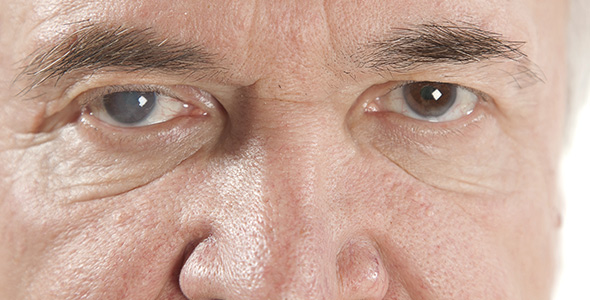Cataracts are a common cause of blindness in the United States, and cataract surgery is one of the most frequently performed eye procedures worldwide. The condition affects over 20 million Americans who are 40 years of age or older. It is estimated that by 2020, that number will have reached 30 million. For this reason, researchers are constantly searching for ways to perfect cataract surgery and enhance its success among those who require the procedure. Advancements in something referred to as “phacoemulsification” and intraocular lens technology, or IOLT, are the primary discoveries that have led to this new era of cataract surgery.
Cataract Surgery Procedure
The procedure is typically completed on an outpatient basis, and in most cases takes less than an hour to perform. The patient’s pupil is dilated before the surgery begins, through the simple placement of eye drops. A person may also be given local anesthetic to numb the surrounding area, as well as a sedative. Therefore, the patient is typically awake when the surgery is completed, but he or she is extremely groggy and not very aware of his or her surroundings.
Next, the surgeon removes the clouded lens from the patient’s eye during cataract surgery, and an artificial lens is implanted where the damaged lens was removed.
Latest Surgical Methods for Cataract Surgery
One of the most modern procedures for cataract surgery is the aforementioned phacoemulsification, during which the eye surgeon makes a tiny incision in the cornea of the eye, located in the front. This is completed with a needle thin probe that is used only on the area where the cataract has formed. This probe transmits ultrasound waves, which emulsify the cataract so that the fragments can be suctioned out. The very back of the natural lens, which is referred to by surgeons as the lens capsule, remains intact to serve as a platform on which the artificial lens can rest. Depending on what the surgeon feels is best, a stitch may or may not be used to close the cornea incision when the procedure is complete.
Whether or not a stitch is used often depends on whether the standard phacoemulsification process is used or a different option, referred to as extracapsular cataract extraction is recommended. Those who require the extracapsular procedure usually need a larger incision, which will require a stitch and this is something the surgeon will discuss with each patient on a case to case basis.
The newest implant to replace lenses damaged by cataracts are called intraocular lenses, and they are made of silicone, acrylic, or plastic. The new lens cannot be seen with the naked eye, and the patient will not feel the new lens. It becomes a permanent part of the eye and requires no particular care, other than traditional eye care and exams- that were a part of the patient’s life prior to the development of cataracts.
With advancements in modern medical technology, patients will discover there is a variety of intraocular lenses from which to choose. However, what is appropriate for one patient may not be a good choice for the next. Therefore, the surgeon will discuss this aspect with each client. For example, some types of intraocular lenses block ultraviolet light, some work as bifocals and others offer only near or distance vision. For certain individuals, a lens can be selected to offer distance vision for one eye and close vision for the other.
What to Expect After Cataract Surgery
Following cataract surgery, patients can expect to see improvement in their vision within several days. It may be blurry at first, as the eye adjusts and heals itself. After the surgery is complete, the patient must schedule a follow-up appointment, usually within several days of the surgery. After that, another appointment is made for approximately one week after the first follow-up, and then the eyes are monitored on a monthly basis until the surgeon is satisfied that the procedure was successful.
It is normal to feel mild discomfort and itchiness for several days following the surgery. Patients should avoid pushing or rubbing their eyes and in many cases, the surgeon recommends that a protective shield or eye patch be worn for 24 hours following the surgery.
The surgeon may prescribe medications such as, eye drops to prevent infection, control eye pressure, and reduce inflammation, following the procedure. However, patients can expect the majority of the discomfort to disappear over a few days. Many times, complete healing occurs within two months.
Cataract surgery is rarely done in both eyes simultaneously. Rather, the surgeon typically schedules a second procedure several months after the first. The obvious goal of this method is to allow the first eye to completely heal prior to performing surgery on the other.
Success Rate and Complications
Cataract surgery, particularly the new procedures described above, successfully restore vision in almost 100 percent of patients. However, as with any type of surgery, there are certain risks associated with phacoemulsification and intraocular lens technology, although they are rare.
For instance, patients may develop a post-surgery complication known as posterior capsule opacification, or PCO, which is also referred to as a secondary cataract. This occurs when the back portion of the lens becomes cloudy and impairs vision. This is the part of the lens that is not removed during the procedure, but must support the implant. Therefore, when this complication occurs, it must be dealt with immediately.
PCO is addressed through the use of a painless, five-minute procedure that is performed on an outpatient basis. The procedure is called YAG laser capsulotomy, and is completed through the use of a laser beam. The latter makes a small incision in the clouded capsule to offer a clear path for light to pass through, thus restoring normal vision.
Following the procedure, the patient is typically asked to stay in the surgeon’s office for approximately 60 minutes to ensure that eye pressure does not increase. Fortunately, this complication is rare, and only in extreme cases do complications of other types arise. Anyone who is interested in learning more about cataract surgery, or who believes his or her vision is failing due to cataracts, or other problems, should schedule an appointment with an ophthalmologist. Contact Dr. Goosey for cataract surgery.






